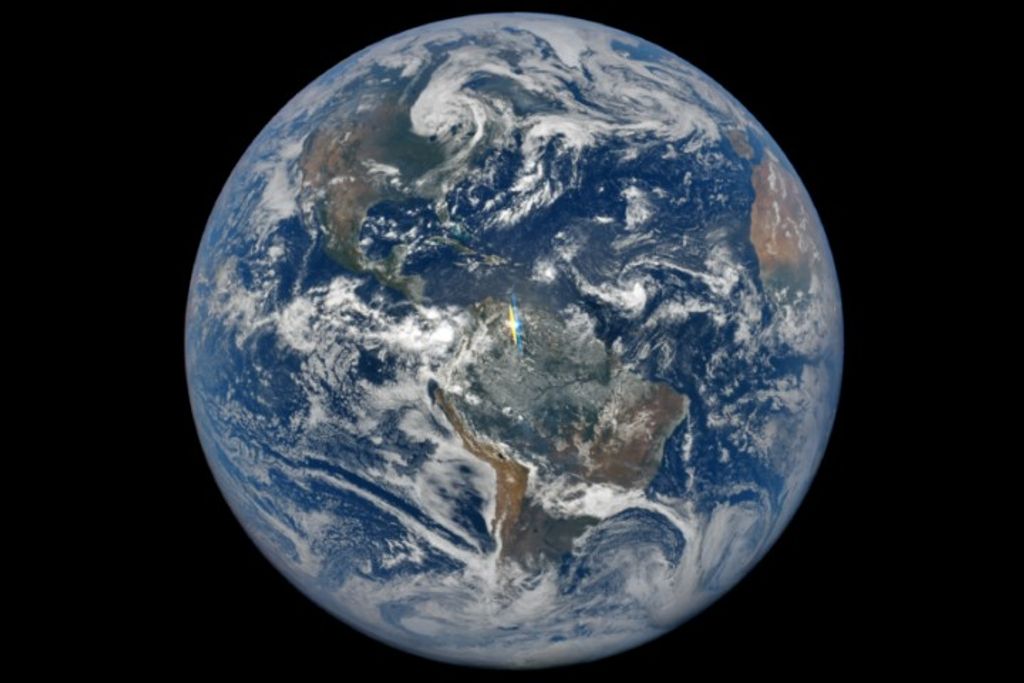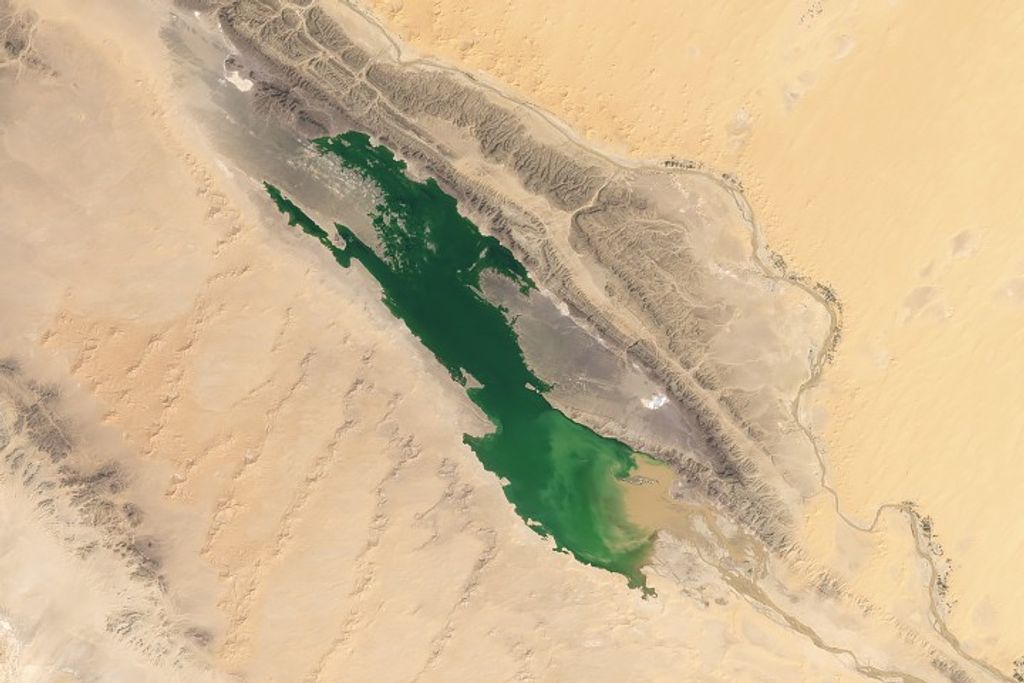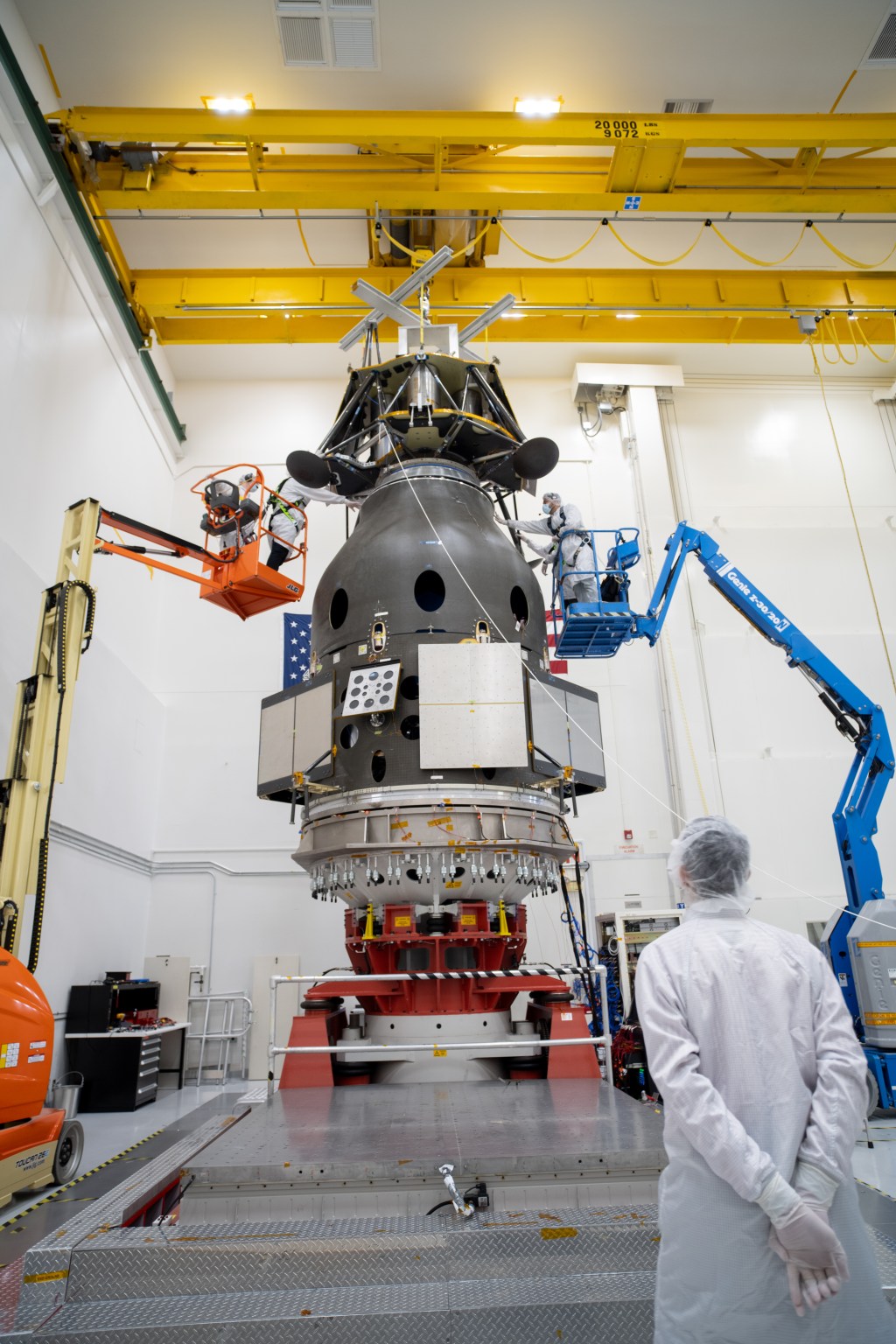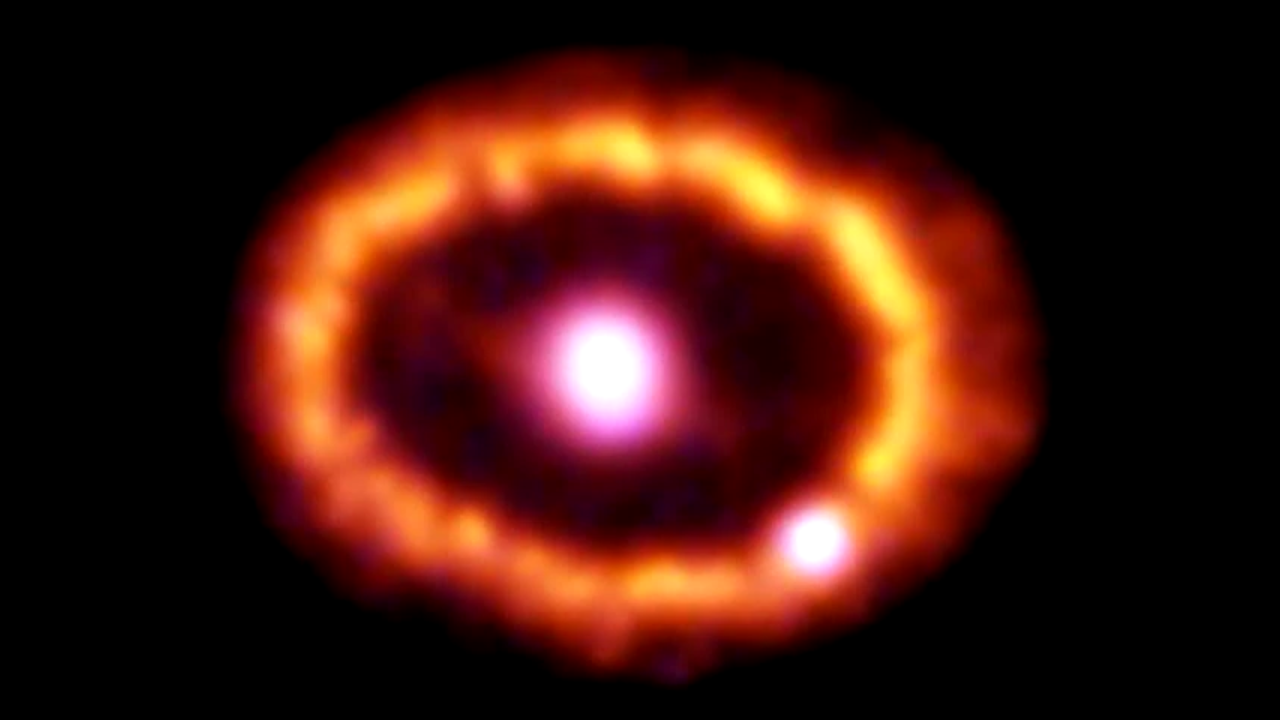1 min read
Supersonic Shock Wave Heats Gas Ring Around Supernova 1987A (SN1987A)

Seventeen years ago, astronomers spotted the brightest stellar explosion ever seen since the one observed by Johannes Kepler 400 years ago. Called SN 1987A, the titanic supernova explosion blazed with the power of 100,000,000 suns for several months following its discovery on Feb. 23, 1987. Although the supernova itself is now a million times fainter than 17 years ago, a new light show in the space surrounding it is just beginning.
This image, taken Nov. 28, 2003 by the Advanced Camera for Surveys aboard NASA's Hubble Space Telescope, shows many bright spots along a ring of gas, like pearls on a necklace. These cosmic "pearls" are being produced as a supersonic shock wave unleashed during the explosion slams into the ring at more than a million miles per hour. The collision is heating the gas ring, causing its innermost regions to glow.
Astronomers detected the first "hot spot" in 1996, but now they see dozens of them all around the ring. The temperature of the flares surges from a few thousand degrees to a million degrees Fahrenheit. Individual hot spots cannot be seen from ground-based telescopes. Only Hubble can resolve them.
And, more hot spots are coming. In the next few years, the entire ring will be ablaze as it absorbs the full force of the crash. The glowing ring is expected to become bright enough to illuminate the star's surroundings, thus providing astronomers with new information on how the star ejected material before the explosion.
The elongated and expanding object in the middle of the ring is debris from the supernova blast. The glowing debris is being heated by radioactive elements, principally titanium 44, that were created in the supernova explosion. The debris will continue to glow for many decades.
The ring, about a light-year across, already existed when the star exploded. Astronomers believe the star shed the ring about 20,000 years before the supernova blast.
The violent death of a star 20 times more massive than the Sun, called a supernova, created this stellar drama. The star actually exploded about 160,000 years ago, but it has taken that long for its light to reach Earth. The supernova resides in the Large Magellanic Cloud, a nearby small galaxy that is a satellite or our Milky Way galaxy.
Since its launch in 1990, the Hubble telescope has watched the supernova drama unfold, taking periodic snapshots of the gradually fading ring. Now, the orbiting observatory will continue to monitor the ring as it brightens from this collision.
About the Object
- R.A. PositionR.A. PositionRight ascension – analogous to longitude – is one component of an object's position.05h 35m 28.25s
- Dec. PositionDec. PositionDeclination – analogous to latitude – is one component of an object's position.-69° 16' 13.0"
- ConstellationConstellationOne of 88 recognized regions of the celestial sphere in which the object appears.Dorado
- DistanceDistanceThe physical distance from Earth to the astronomical object. Distances within our solar system are usually measured in Astronomical Units (AU). Distances between stars are usually measured in light-years. Interstellar distances can also be measured in parsecs.Approximately 160,000 light-years away (49 kiloparsecs)
- DimensionsDimensionsThe physical size of the object or the apparent angle it subtends on the sky.This image of the SN1987A ring is roughly 2.6 arcseconds wide. At the distance of the LMC, this represents 2 light-years (0.6 parsecs).
About the Data
- InstrumentInstrumentThe science instrument used to produce the data.HST>ACS
- Exposure DatesExposure DatesThe date(s) that the telescope made its observations and the total exposure time.November 28, 2003
- Object NameObject NameA name or catalog number that astronomers use to identify an astronomical object.SN1987A
- Object DescriptionObject DescriptionThe type of astronomical object.Supernova in the Large Magellanic Cloud (LMC)
- Release DateFebruary 19, 2004
- Science ReleaseSupernova Shock Wave Is Producing a Spectacular New Light Show
- Credit

Related Images & Videos
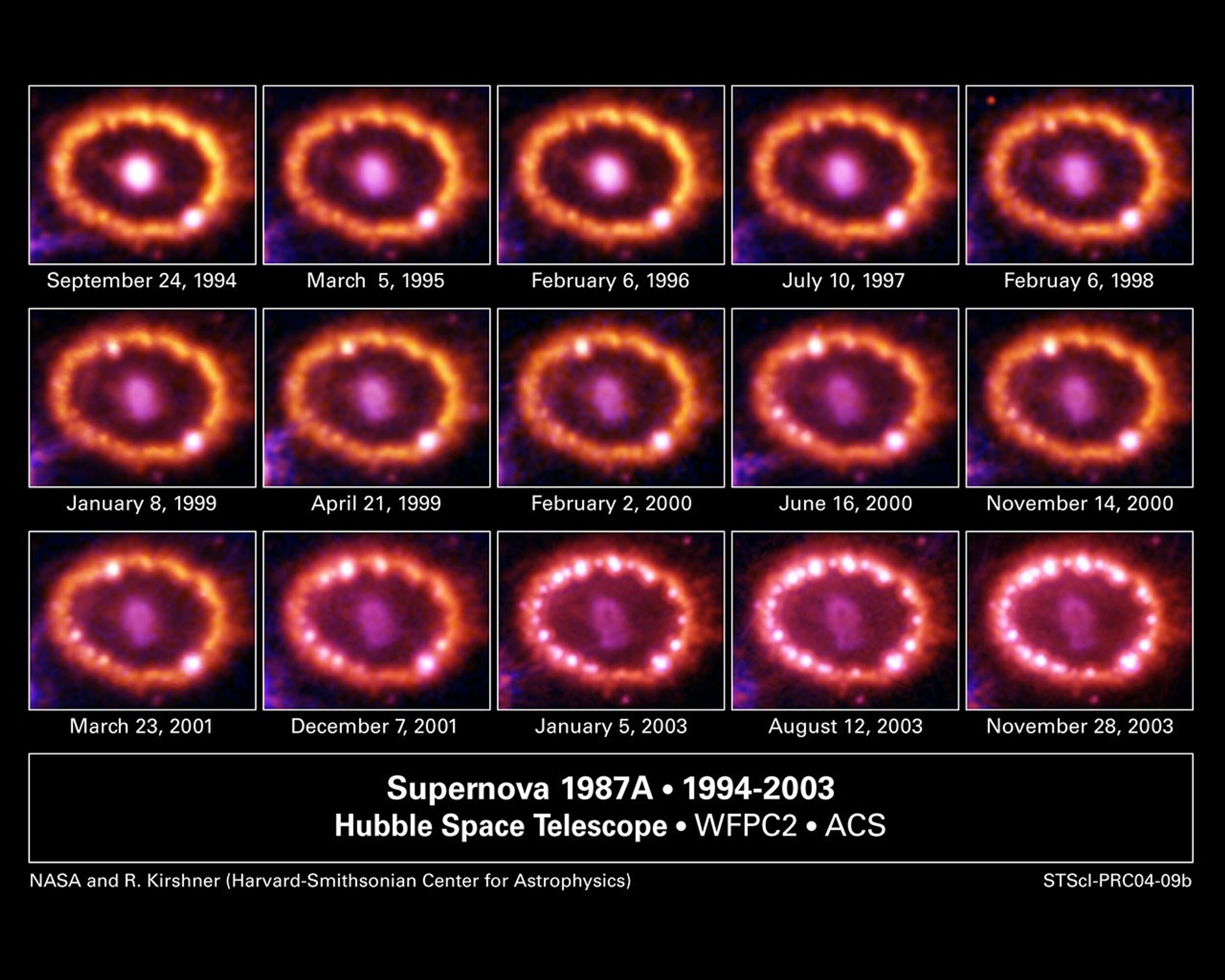
Hubble Supernova 1987A Scrapbook (1994-2003)
Since its launch in 1990, NASA's Hubble Space Telescope has watched a celestial drama unfold at a stellar demolition site. A shock wave unleashed during a stellar explosion, called Supernova 1987A (SN 1987A), has been racing toward a ring of matter encircling the blast site....
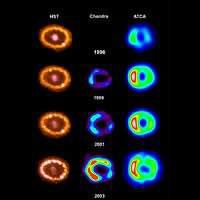
Observations of SN1987A at Different Wavelengths
Hubble's optical light observations of Supernova 1987A become even more valuable when they are combined with observations from telescopes that can measure other kinds of radiation from the exploding star. The image shows the evolving images of hot spots from the Hubble Telescope...
Share
Details
Claire Andreoli
NASA’s Goddard Space Flight Center
Greenbelt, Maryland
claire.andreoli@nasa.gov








